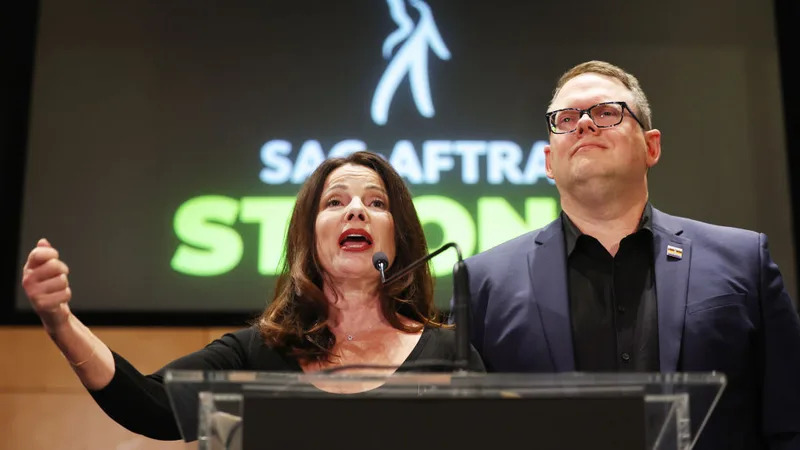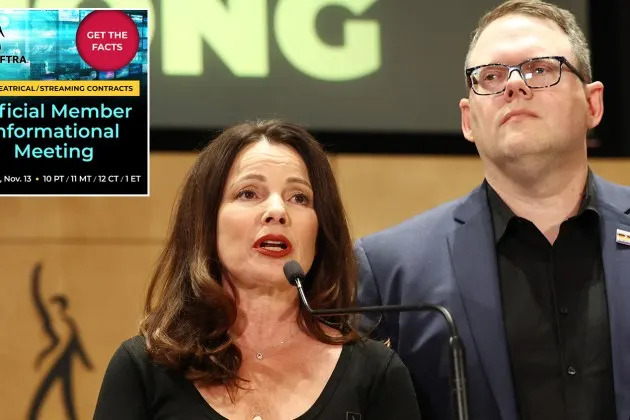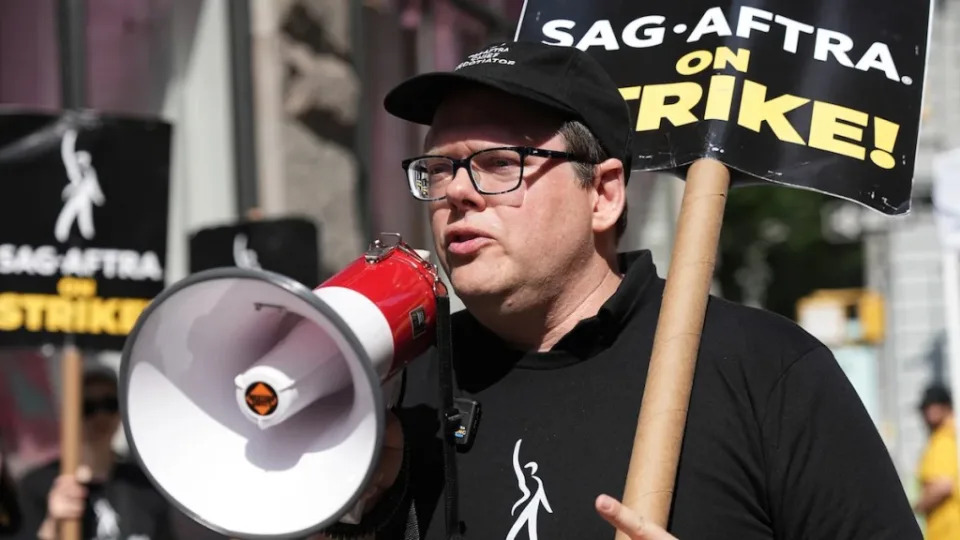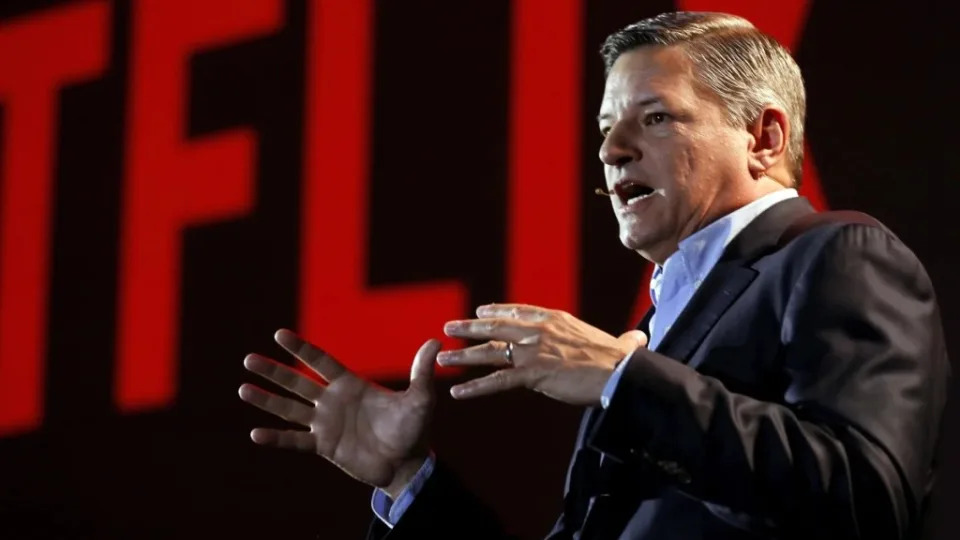Julian Spector
Mon, November 13, 2023

Flow batteries, a long-promised solution to the vicissitudes of renewable energy production, boast an outsize ratio of hype to actual performance. These batteries, which store electricity in a liquid electrolyte pumped through tanks, have been kicking around in labs for ages and in startup pitch decks for the last couple of decades. The technology’s promoters insist it excels where lithium-ion batteries are weak, but grid-storage buyers keep failing to notice.
But the flow-battery sector’s slow roll didn’t stop a relative newcomer, Germany’s CMBlu, from pulling in 100 million euros last month. European construction-services firm Strabag made that investment while promising to lend its infrastructural expertise to help install the batteries around the world.
To contextualize the scale of this funding, it comes close to what was once the largest-ever equity investment for a grid-storage hardware startup, announced just four years ago (that was for Energy Vault’s block-stacking robo-crane, since discontinued). These days, the check sizes have gotten bigger — see Form Energy’s $450 million round last fall — but CMBlu may well have pulled in the largest venture investment for the subcategory of flow-battery startups. Fellow flow-battery-maker ESS, which already has a real factory and real installations, raised a total of $57 million from venture investors before going public via a special-purpose acquisition company (SPAC) in 2022.
So what is CMBlu doing differently to break through the flow-battery malaise and make a technology that really helps decarbonize the electric grid?
Ben Kaun, president of CMBlu’s U.S. division, told Canary Media earlier this fall that the company stands apart from the flow-battery pack by augmenting liquid electrolytes with solid components to squeeze more energy storage into its physical footprint. And by choosing organic components, CMBlu avoids having to use the often-controversial minerals that mainstream clean-energy technologies rely on.
“We're transitioning from a fossil fuel economy to a renewables and metals economy — there's so much metal” needed to manufacture wind, solar and conventional batteries, Kaun said. In contrast, “What we have here at CMBlu is a rechargeable polymer, a rechargeable plastic. We can make the plastic [and] recycle the plastic.”
That pitch has won two large-scale contracts with U.S. utilities and a couple in Europe, demonstrating some commercial traction for the unusual liquid-solid batteries. CMBlu is building an automated pilot factory in Alzenau, Germany and plans to install that system at larger-scale factories in one or more parts of the U.S. in 2025.
Bodily inspiration for energy-dense flow batteries
CMBlu’s U.S. chief brings an informed perspective to the role — Kaun spent the previous 12 years researching the whole swath of long-duration storage contenders for the nonprofit Electric Power Research Institute. CMBlu managed to lure him from analyzing the field to competing in it.
CMBlu founder Peter Geigle previously worked on energy management within brain cells as a medical doctor and biotech entrepreneur, Kaun told me at the RE+ trade show in Las Vegas this September. The human brain, incidentally, runs on electricity but doesn’t require piles of lithium and cobalt. Geigle’s understanding of how the body stores and transmits energy via organic materials propelled CMBlu’s unique approach to flow batteries.
CMBlu fills its storage tanks with a solid polymer that holds a charge, and then transfers it to and from the liquid electrolyte, which is pumped into an electrode stack for charging and discharging cycles. Kaun likened that system to how the human body stores energy in fat, and then transfers that energy to blood sugar when it needs to be delivered to cells.
This mimicking of human anatomy could give CMBlu an edge in the metric of energy density, or how much storage capacity can be packed into the physical footprint of the product.
Generally speaking, flow batteries and other non-lithium-ion storage devices sprawl out a bit — they don’t have to squeeze into the chassis of a sports car, so companies are willing to try less-dense approaches. But even though power plants can accommodate more spacious battery technologies, there are costs to letting things get bloated.
“With anything where you have low energy density, you're putting in a lot of extra infrastructure to make it happen,” Kaun said. “There're a lot of costs that you don't see immediately. But once you try to build a project, everything's bigger.”
Avoiding the use of metals distinguishes CMBlu’s technology from that of conventional lithium-ion batteries or certain chemistries that are popular in the flow-battery field, like vanadium redox. When the price of vanadium shoots up, companies that rely on that ingredient feel the pain. And while mining supplies haven’t constrained the growth of lithium-ion batteries thus far, there are real concerns about the pace of new mine openings keeping up with projected demand growth in the coming decades. CMBlu dodges that impending challenge by working with plastics; ESS does it by using iron, an abundant and inoffensive commodity.
Some demand now: Select utilities test flow batteries
All investments make a bet on the future, but that’s particularly apparent with flow batteries because their actual sales and construction today are so limited. This makes it hard to evaluate the relative success of various types of flow batteries — even the category leaders have little to show by way of built and operating storage projects.
Flow batteries’ commercial appeal increases as power companies need to store energy for longer periods of time, Kaun explained. That’s because it’s cheaper to extend storage duration by installing a larger tank than it is to add more lithium-ion battery packs.
“There really hasn't been demand for those solutions until recently,” he said. For now, the economic adoption of 4-hour lithium-ion batteries largely depends on capacity payments, a mechanism to ensure that utilities always have enough power to meet demand at peak times. Grid planners and regulators in places like California have recognized the value of 4-hour storage, so battery developers build 4-hour batteries to qualify for capacity payments.
“But in the future, it's evolving,” Kaun said. He predicts demand ramping up for 6- and 8-hour batteries before too long.
CMBlu’s U.S. sales strategy, then, has been to seek out utilities whose coal plant retirements are forcing them to figure out a clean-energy replacement sooner rather than later. When they realize they need something more than what lithium-ion can give them, CMBlu offers an alternative.
Two major U.S. utilities have taken up the offer. First came Wisconsin utility WEC, which chose CMBlu in February for a pilot of 1 to 2 megawatt-hours at the Valley Power Plant in Milwaukee, Wisconsin. That’s a modest size, but already past the megawatt-hour threshold.
Then, Phoenix-area public power company Salt River Project chose CMBlu from a cattle call of proposals submitted by emerging long-duration storage companies. This “pilot,” announced in late August, will have a capacity of 5 megawatts and 50 megawatt-hours, making it, to use a technical term, pretty big actually. The warehouse-like structure will be built in 2025 to go online by the end of that year; it will help SRP stretch its growing solar production into the more valuable nighttime hours. Kaun’s former colleagues at EPRI will study both projects to document how well the technology performs in real life.
The biggest flow battery in the world is reportedly a 100-megawatt/400-megawatt-hour vanadium redox flow system in Dalian, China. Other major flow-battery projects include ESS’ multiyear contract to install 2 gigawatt-hours of iron flow batteries in Sacramento to help the municipal utility reach zero carbon by 2030. Invinity, formed by the merger of two flow-battery startups, is selling a new-generation product and recently clinched Department of Energy grants to support 84 megawatt-hours installed across several sites in the U.S.
In other words, the flow-battery market is still in its trial period, and no clear winners have swept the field yet. CMBlu still has plenty of time to establish itself before the alternative grid-battery market gets going, and now it has the money to stick around, too.
Engineers have created a revolutionary new battery that could replace costly lithium-ion options: ‘Efficient, cheap, safe’
Jane Donohue
Mon, November 13, 2023

Researchers at the Royal Melbourne Institute of Technology have tripled the energy density of their experimental proton batteries, presenting an alternative to conventional lithium-ion batteries.
Lithium-ion batteries are everywhere. Chances are, they power your phone, laptop, appliances, and other electronics. Lithium-ion batteries have a high energy density, which means they can store a lot of energy in a relatively small space. Because of this, they are often used to power electric vehicles.
They don’t come without a cost, though. Lithium and other rare earth metals necessary to make lithium-ion batteries are difficult to recycle. If they end up in landfills, they can release harmful toxins into the soil and nearby waterways. In addition, mining and processing lithium and the other metals that lithium-ion batteries require significant energy, contributing to air pollution that requires frequent use of the battery to offset. Finally, demand for EVs could soon outpace lithium supplies, threatening attempts to reduce reliance on fossil fuels.
The RMIT team’s timing couldn’t be better. Their new proton battery has an energy density of 245 watt hours per kilogram, nearly three times the energy density of the team’s 2018 prototype. This energy density rivals that of conventional lithium-ion batteries, which typically have an energy density of around 260 Wh/kg.
Proton batteries use a carbon electrode and are charged by splitting water molecules.
“The main resource used in our proton battery is carbon, which is abundant, available in all countries, and cheap compared to the resources needed for other types of rechargeable battery such as lithium, cobalt, and vanadium,” said lead researcher and RMIT professor John Andrews in a statement.
The battery is charged with a conventional power outlet. After that, electricity from the power supply splits water molecules, releasing protons that bond with the battery’s carbon electrode. The battery can store these protons to be discharged and converted into power later.
“When discharging, protons are released from the carbon electrode and pass through a membrane to combine with oxygen to form water — this is the reaction that generates power,” Andrews said.
Because they use abundant and readily available materials, these batteries are both cheap and more environmentally friendly than lithium-ion batteries. Aside from the power used to charge them, the production and usage of the batteries themselves generate almost no pollution. They don’t require the mining and processing lithium-ion batteries do, and, unlike lithium-ion batteries, they’re easily recyclable.
“As the world shifts to intermittent renewable energy to achieve net-zero greenhouse emissions, additional storage options that are efficient, cheap, safe, and have secure supply chains will be in high demand,” Andrews said. “That’s where this proton battery — which is a very equitable and safe technology — could have real value and why we are keen to continue developing it into a viable alternative.”
The RMIT team will continue its partnership with automotive component supplier Eldor Corporation to further develop the technology.
Battery breakthrough brings ‘unprecedented performance’ to next-gen cells
Anthony Cuthbertson
Tue, November 14, 2023

Battery breakthrough brings ‘unprecedented performance’ to next-gen cells
A battery breakthrough made by researchers in Japan could pave the way for next-generation batteries to finally enter mass production.
A team from Tokyo University of Science discovered a way to build sodium-ion batteries with an equivalent performance to conventional lithium-ion batteries.
Lithium-ion, or li-ion, batteries are found in everything from electric cars to smartphones, however they are made from difficult-to-extract and expensive resources, while also containing liquid electrolytes that are toxic and flammable.
By contrast, sodium-ion batteries are cheaper, offer stability against extreme temperatures, and pose no risk of overheating. Until now, their main limitation has been a lower energy density compared to li-ion batteries.
To overcome this limitation, the scientists developed a high-capacity electrode made from nanostructured hard carbon, which they were able to optimise and then incorporate into an actual battery.
The researchers said the new electrodes deliver “unprecedented performance” and offer a viable option for producing next-generation batteries for consumer electronics and electric vehicles.
“This value is equivalent to the energy density of certain types of currently commercialised lithium-ion batteries... and is more than 1.6 times the energy density of the first sodium-ion batteries, which our laboratory reported back in 2011,” said Professor Shinichi Komaba from Tokyo University of Science.
The breakthrough could also make sodium-ion batteries viable for other practical applications, such as low carbon footprint energy storage systems for solar and wind farms.
The research was detailed in a study, titled ‘New template synthesis of anomalously large capacity hard carbon for Na- and K-ion batteries’, published in the journal Advanced Energy Materials.
Morrisville to get new NC lithium-ion battery plant promising to create over 200 jobs
Brian Gordon
Tue, November 14, 2023

Forge Nano
A Colorado-based materials engineering firm has plans to bring more than 200 jobs to Morrisville as part of a new lithium-ion battery business. The company, called Forge Nano, seeks to be the latest to join North Carolina’s burgeoning lithium-based economy by establishing a division called Forge Battery in the Triangle.
“We are extremely excited to launch Forge Battery in the Battery Belt, where we intend to produce batteries for the world’s most demanding applications,” Forge Nano CEO Paul Lichty said in a statement.
On Tuesday, Forge committed to hiring 204 people in Wake County and investing $142 million in the area by the end of 2027. The facility will be located on Southport Drive at a new life science manufacturing site called CaMP Morrisville.
On Tuesday, the North Carolina Economic Investment Committee awarded Forge a job development grant worth up to $1.5 million over 12 years. Wake County and the Town of Morrisville combined to offer additional incentives valued at $1.7 million.
In addition to its jobs grant, the company said it stands to receive another $6.5 million from the state, including “sales tax exemptions on planned capital investment.”
Forge Nano is set to join a growing field of lithium-based businesses in the state.
Last month, North Carolina approved a lithium-ion battery plant from the India-based Epsilon Advanced Materials that promises to bring 500 jobs to a new facility near Wilmington. Soon after, Toyota announced a substantial increase in employment and investment targets at its lithium-ion battery site outside of Greensboro.
Two lithium mining companies — Albemarle Corp. and Piedmont Lithium — are also seeking to expand or revive operations in North Carolina.
Lithium-ion batteries are key components in many electric vehicles and energy storage systems.
“North Carolina’s growing leadership in clean energy can be seen everywhere you look, and Forge Battery’s decision continues our momentum,” Gov. Roy Cooper said in a statement Tuesday. “New jobs, new investment, and new opportunities for our people are coming fast as we embrace this vital new sector of the global economy.”
Open Source
Do you enjoy Triangle tech news? Subscribe to Open Source, The News & Observer's weekly technology newsletter and look for it in your inbox every Friday morning. Sign up here.













